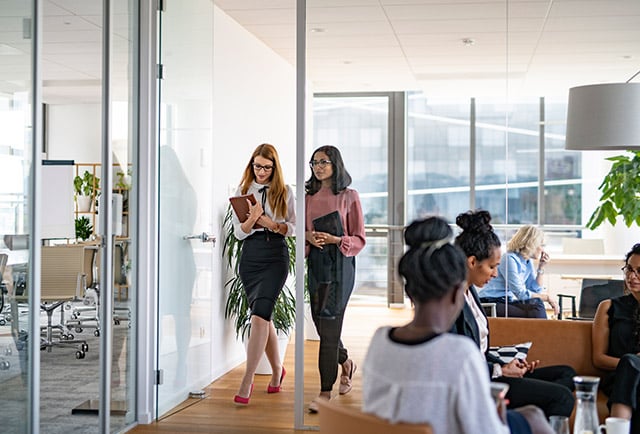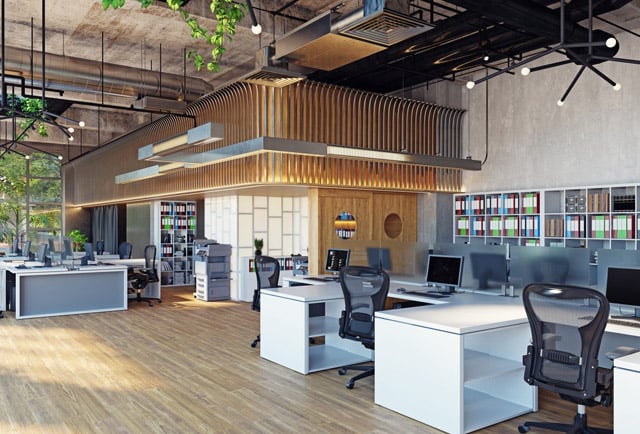- 2 Minute Read
- 15th June 2021
Two thirds of UK professionals want a hybrid of office and home work
According to the latest research by architecture, design and planning firm Gensler, two thirds of UK professionals want a hybrid of office and home work, spending between 1 and 4 days in the office each week. Only 12% want to work from home full time.

The UK Workplace Survey of 2500 UK professionals found that those workers currently in a hybrid model are having the best experience.
In this article we look at the key findings of the survey and explore why flexible workspaces are central to a hybrid working future.

Hybrid workers derive greater job satisfaction
The report suggests that hybrid workers are more likely than others to experiment with new ways of working and felt that hybrid working during the pandemic has had a positive impact on their creativity and overall job satisfaction. Hybrid workers scored their workplace more highly in terms of personal creativity, wellbeing and job satisfaction. The hybrid model is seen as allowing employees to match the environment to the work that they do and thereby creating an optimal blend of work locations.
The experience of enforced home working during the pandemic has given millions of workers a taste of an alternative work pattern and has created an unprecedented demand for a change to the status quo.
Offices are best used to foster collaboration
For those office based workers, 65% of their time was spent collaborating vs 37% for home workers. Conversely office-based workers spent 35% on focussed work, compared with 63% for home workers. Therefore, the hybrid model is a preferred solution for those workers wishing to maximise the strengths of both environments.
Jane Clay, Gensler Principal, Strategy Director, commented: “More so than ever before, the workplace has to be about people. We need to re-connect with what makes us human. As we sit at home, we need to consider how we want these human connections to unveil and what types of space and experiences will best support them. It’s clear that offices will be best used as places to foster collaboration, connection and experience, which cannot be replicated in the home.”

“The majority of workers want to come back to the office for at least 3 days”
What role does the office play in this hybrid future and what form might it take?
PwC is rolling out a hybrid flexible working policy that will allow its 22,000 UK staff to split their time about half and half between their home and office after the pandemic.
Microsoft Vice President & Partner of Worldwide Real Estate, Construction, Facilities and Security, Michael Ford said, “before COVID-19, less than 5 percent of employees at Microsoft worked remotely, and it varied by group. Now, based on recent research, that number is closer to 10 or 12 percent. However, company-wide surveys have revealed that the majority of workers at the firm want to come back to the office for at least 3 days or more.”

Flexible workspace – offices for a hybrid future
There is an expectation that workforces will become more geographically spread, opening new and lower cost talent acquisition opportunities, and giving more personal freedom to workers.
Companies will realign their real estate portfolios and re-size to a footprint and locations that better serves distributed teams, using flexible workspace to add agility. HQs are likely to get smaller and focus on engagement and building trust. They will be designed differently, packed with amenities and high touch, an embodiment of the company brand and culture.
Flexible workspaces (serviced offices and co-working spaces) will also fulfil a need for satellite offices allowing companies maximum agility within their physical footprint. Many companies will give employees additional flexibility with freedom to access flex and co-working spaces to work outside their home.
Where will you work?
The hybrid model points towards three principal workplaces; the traditional central HQ office, an alternative flexible space and home, with all three operating seamlessly, with technology at the core ensuring that firms can blend in-person and digital working.
This transition won’t happen overnight but many industry commentators share this vision of a flexible future, expecting existing lease commitments to be wound down over time and hybrid working to become the new norm.


